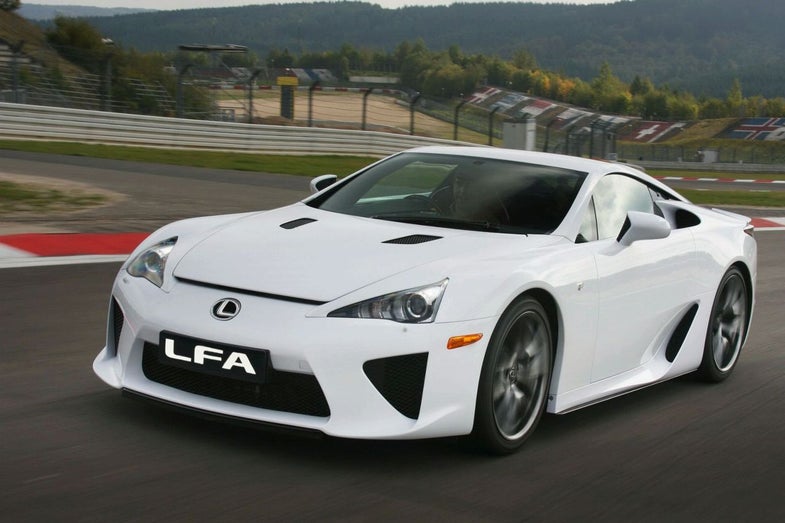Lexus LFA Debuts in Tokyo: A Big-Bucks Toyota Supercar
Lexus makes good on a five-year promise, with a high-horsepower, design-forward halo of a sports car made from cutting-edge materials. And it's got an equally superlative price tag.

This year’s Tokyo Auto Show was sadly deficient in high-future-concept cars, so a bombshell from Lexus wound up stealing the show. That is, the LFA, a long-awaited sports car with a price tag rivaling those of traditional exotics from Ferrari and Lamborghini. When it hits US shores, the LFA will cost a neck-wrenching $375,000. So what is Lexus bringing to the performance table for the money?
A big deal for the LFA is its use of materials. The company’s stated goal of keeping the car’s weight to an absolute minimum — in this case, 3,263 pounds — and a need for sports-car stiffness led to a decision to forgo aluminum in favor of aerospace-grade carbon-fiber-reinforced plastic, or CFRP for chassis and bodywork construction. The composite material is lighter and stronger, though more expensive to produce. Lexus says CFRP accounts for 65 percent of the body, with aluminium alloy accounting for 35 percent, leading to a total weight savings of 220 pounds.
For power, the heart of the LFA is a high-revving, naturally aspirated, 4.8-liter V10 producing 552 hp and redlining at a screaming 9,000 rpm. A joint engineering project of Toyota and Yamaha, each engine will be hand built and will propel the LF-A from zero to 62 mph (100 km/h) in 3.7 seconds, and a max speed topping 202mph. Lexus says the exhaust system has also been tuned to mimic the sound of a Formula One engine at full revs.
Four driving modes adjust shift points of the six-speed automated sequential manual transmission, along with braking and engine-performance for three performance tiers: Auto, Sport, Normal and Wet.
Inside, a new instrument panel combines an LCD display with a motor-driven movable ring. The dial houses a digital speedo and gear indicator, along with transmission mode, vehicle control data and trip information displays. A circular dial featuring a central tachometer with an LCD needle changes color — from green for a recommended up-shift, to red for when engine speed exceeds the redline. Drivers can also program the display to turn yellow or green for when the revs reach a user-selected range.
Lexus says it’s only building 500 LFA units to be sold worldwide, with production set to begin in December 2010.
[via World Car Fans]

Lexus LFA, a Big Bucks Sports Car With a Formula One Vibe

Lexus LFA: Weight Savings From Carbon Fiber Construction

Lexus LFA: Ten Cylinders, 9000 rpm, F1 Sound

Lexus LFA: An LCD Display That Guides Upshifting

Lexus LFA: A Speedy Halo Car for Toyota’s Upscale Brand